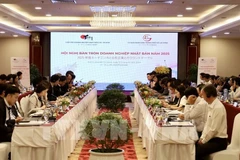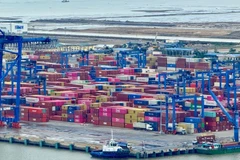SMEs are experiencing a number of hardships,including difficulties in accessing loans and having to suspendoperations, Balasingam said at a workshop in Hanoi on November 18.
Sharingthe same view, Director of the Institute for SME Management Pham NgocLong said it was challenging for SMEs to grow if they did not receivesupport from the State. According to Long, since 2011, the number ofSMEs in Vietnam has increased significantly, but competitiveness waslow, while access to capital remained limited.
He cited a surveyconducted by the Institute for SME Management, which found that only32.38 percent of SMEs regularly received loans, while another 35.24percent said they faced difficulties in seeking credit. The remainingSMEs considered loans inaccessible.
Meanwhile, the banking systemlacked stable middle- and long-term capital resources with reasonableinterest rates that met the needs of SMEs, Tran Trung Kien, DeputyDirector of Corporate Clients at Techcombank, admitted.
He notedthe financial transparency of SMEs was still low, while banks needed tobase the provision of loans on businesses’ financial reports, addingthat business plans were usually not persuasive enough.
Kienpointed out the vulnerability of SMEs, elaborating that after taking outloans some SMEs moved their headquarters or filed for bankruptcy,making it hard for banks to process the outstanding debt.
He urged SMEs to improve the transparency of their financial reports and operational effectiveness.
Atpresent, the majority of businesses in Vietnam are SMEs, creating jobsfor more than half a million people each year and generating more than40 percent of the country’s GDP.-VNA
























